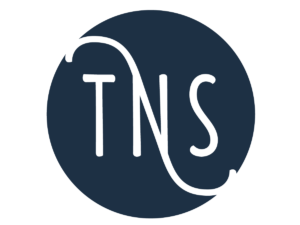Innovative Learning: The Power of Reflection

Reflection is an integral part of the New School’s project-based curriculum. Students are asked to reflect on nearly everything they do at school, whether it’s writing an essay for AP US History class, learning to code during our after school programming course, or helping to moderate our weekly entrepreneurship speaker series. Reflection is a crucial tool for allowing our students to synthesize what they’re learning and cultivating an intentional approach to their education.
Embodying the Spirit of Reflection

Students reflect together after a trip to Martin Luther King, Jr.’s Ebenezer Baptist Church.
We ask TNS students to reflect all the time while they’re at school: about their work, themselves, their teachers, and their peers. As members of the faculty, we model a reflective spirit every day. Faculty members have scheduled times during which we sit in on each other’s classes and provide feedback about our colleagues’ learning goals. At the end of each week, parents receive an email detailing what students covered in class as well as a list of suggested reflection questions to ask their student. Our goal is to empower everyone in our school community—including teachers, students, and parents—to help co-create an environment where feedback is encouraged and reflection is the norm.
Strategies for Student Reflection
Getting students to engage in meaningful reflection is not always an easy task. Soliciting answers that are more meaningful than general impressions (for example, “I like this project” or “Next time I would choose a different book”) takes practice and guidance. Here are some strategies that I’ve found useful for spurring thoughtful reflection:
- Reflect early and often. If students are asked to quickly look back on what they have learned or experienced several times a week, longer written and verbal reflections tend to seem less daunting.
- Allow students to reflect in a variety of different media. Throughout a project, we might ask students to a draft written reflection by hand, participate in a verbal reflection with teachers and students, fill out an online survey about their group work, and write short blog posts after each project milestone.
- Facilitate student-to-student reflection. Blog posts are a great way for students to learn out loud without having a teacher mediating the discussion. Students comment on each other’s school blogs outside of class, and faculty generally take a backseat role in online discussion. We find that students often feel less constrained and are more direct with their feedback when they’re reflecting in blog form.
- Have students reflect on their reflection. Ask students what felt comfortable and uncomfortable about engaging in reflection, and ask for feedback on the reflection questions or tools. I’ve found that students are much more likely to complete reflection exercises thoughtfully if they’ve been asked for feedback and feel invested in the process.
Moving Towards Higher Learning
The feedback that we receive from students encourages us to find more ways to build reflection into the school day. One student recently wrote on his blog: “I never really got why we had to do reflections all the time until today… it just hit me that it’s my chance to look at how I’m thinking and how I can make it better for the next time.” At the end of her first year at TNS, a 9th grader reflected that “looking back on what I’ve done can make me feel proud if I worked hard or bad/uncomfortable if I didn’t.” Reflection opens up space for students to take a step back, connect the dots, and let learning and experiences sink in. After they reflect, students often have a much better idea of what they will do differently next time or why things turned out the way that they did.

TNS students figuring out what to do next.
Because we constantly ask them to critically reflect upon their own learning, it’s very difficult for TNS students to merely “go through the motions” of getting an education. Reflection requires students to ascend to the top of Bloom’s Cognitive Taxonomy (where information recall is the lowest form of learning). Higher learning can only take place when students are evaluating experiences and synthesizing their knowledge into plans for the future—in other words, engaging in deep reflection.
We encourage our students to make connections between classroom work, community-based projects, and thinking about what it means to be invested in your education. Ultimately, we want our students to see reflection as one of many tools they learn in high school that will equip them to be passionate, engaged learners and community members.
